Retrospective of Medieval: Total War
‘There are some defeats more triumphant than victories.” – Michel de Montaigne
By Patrick S. Baker
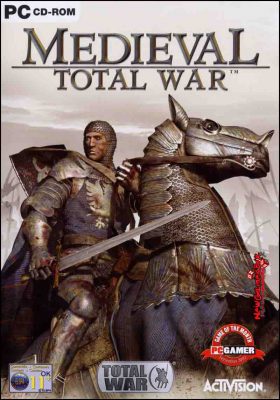
The second installment of the Total War series started out as Crusader: Total War but was quickly renamed to Medieval: Total War (Medieval) to better describe the actual scope of the game. Development of Medieval started shortly after the successful launch of Shogun: Total War (Shogun). The game was developed by The Creative Assembly (CA) and published by Activision. It was released in August 2002, just two years and one month after the release of Shogun.
Throughout the development of the game, the team at CA sought to build on the foundation laid by Shogun, while also aiming to create a more expansive and historically rich experience. The selection of a medieval setting allowed for a diverse range of factions, units, and technologies. The new setting also provided a vast arena for the developers and the players.
The CA team placed a strong emphasis on historical accuracy and authenticity in Medieval. To achieve this, they recruited the help of several distinguished Medieval and Military historians. Most notably Dr. David Nicolle and Dr. Richard Holmes. Drs. Nicolle and Holmes expertise in medieval politics and warfare ensured that the game’s units, factions, and events were historically accurate.
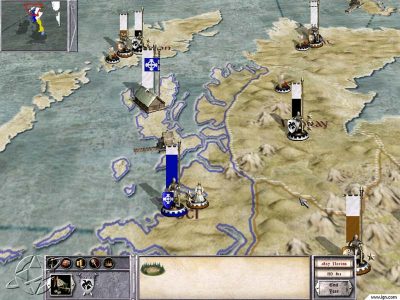 Geographically Medieval encompasses Europe, North Africa, and the Middle East. The game also divides it time frame into the three traditional phases of the Medieval Era; Early, High and Late.
Geographically Medieval encompasses Europe, North Africa, and the Middle East. The game also divides it time frame into the three traditional phases of the Medieval Era; Early, High and Late.
The Early Campaign starts in 1087 with the death of William the Conqueror and goes until 1169. Historically, this time frame represents the long transition from the so-called Dark Ages (aka the Early Medieval Ages) into a largely Feudal society. There are 14 playable factions ranging from the Almohad, Byzantines in the east to the French, and English in west. Factions start with a minimal number of provinces which have a nominal level of infrastructure and. A variety of units are available, but well-organized, professional armies are very rare.
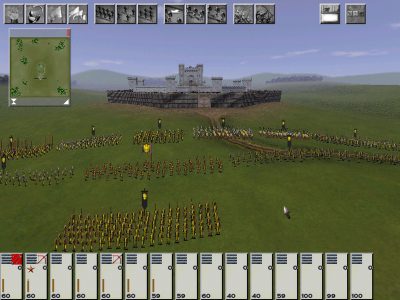 The High Campaign starts in 1205 and goes to 1260 with the Gunpowder Event, which then allows for the creation of gunpowder armed units including gunpowder artillery. Provinces will have more infrastructure than the Early Era. Proper knights, cross-bow units and pole-arm units also appear in this time frame. There are 15 playable factions in the era.
The High Campaign starts in 1205 and goes to 1260 with the Gunpowder Event, which then allows for the creation of gunpowder armed units including gunpowder artillery. Provinces will have more infrastructure than the Early Era. Proper knights, cross-bow units and pole-arm units also appear in this time frame. There are 15 playable factions in the era.
The Late Campaign starts in 1321. The infrastructure in a faction’s provinces will be fairly well- developed. The campaign ends in 1453, the traditionally end of the Medieval Era. In that year, Constantinople fell to the Ottoman Turks, ending the Byzantine Empire and France defeated the English at the Battle of Castillion ending the Hundred Years War. Pike units and more advance gunpowder armed units are available during this campaign.
The governance of a player’s faction is entrusted to the Royal family and the nobility, who serve as the generals and officials of the realm. The character system has been significantly expanded from Shogun, now encompassing multiple attributes, such as Command, Piety, Dread, Loyalty, and Acumen. Characters can also develop traits known as “Vices and Virtues,” based on the actions taken by the character.
One of the most compelling aspects of Medieval’s character system is the loyalty mechanic. Generals with low loyalty can initiate a civil war, plunging the kingdom into chaos. The strategic play of Medieval is enhanced by this mechanic, forcing players to make strategic decisions between using a highly skilled, but disloyal general, or sidelining him and perhaps losing a war.
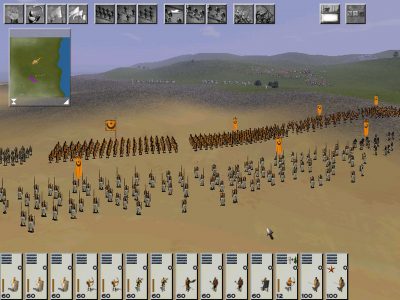 In addition to managing generals, players must also oversee the Royal family. As the game progresses, the king will die, and without an heir, the kingdom is at a great risk of falling into a civil war. Also, Princesses can be utilized as emissaries and married off to secure alliances and bring new members to the Royal family.
In addition to managing generals, players must also oversee the Royal family. As the game progresses, the king will die, and without an heir, the kingdom is at a great risk of falling into a civil war. Also, Princesses can be utilized as emissaries and married off to secure alliances and bring new members to the Royal family.
Further, diplomacy is more complex than in Shogun and includes alliances, vassal states, and the influence of the Papacy. Also, the role of religion is enhanced with the inclusion of Crusades, Jihads, and religious figures such as priests and imams acting as agents
Warfare is also greatly enhanced with the real-time battle system seeing several improvements, including the addition of naval battles. Further, Medieval features a wider variety of units, reflecting the diverse factions and cultures of Medieval Europe. Armies may now have as many as 10,000 sprites in a variety of different types of infantries, cavalry, and siege units.
The battlefield terrain in Medieval is more varied, and includes forests, hills, and rivers. Medieval includes more complex siege warfare with larger and more detailed castles and weapons like trebuchets and battering rams. Also, the battles are more integrated into the overall campaign with factors like religion, alliances, and regional control influencing combat outcomes
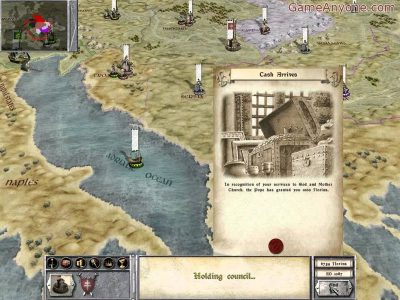 Upon its release, Medieval was widely praised by both reviewers and players. The game has an 88 out of 100 for critic reviews and an 8.8 out of 10 for user reviews on Metacritic.com. PC Gamer awarded Medieval 91%, praising its “incredible depth and attention to detail” and calling it “one of the best strategy games ever made.” GameSpot gave the game a score of 9.0 out of 10, commending its “deep and rewarding gameplay” and “excellent presentation.” IGN also gave a favorable review, scoring it 9.3 out of 10 and noting that the game “improves on its predecessor in almost every way.”
Upon its release, Medieval was widely praised by both reviewers and players. The game has an 88 out of 100 for critic reviews and an 8.8 out of 10 for user reviews on Metacritic.com. PC Gamer awarded Medieval 91%, praising its “incredible depth and attention to detail” and calling it “one of the best strategy games ever made.” GameSpot gave the game a score of 9.0 out of 10, commending its “deep and rewarding gameplay” and “excellent presentation.” IGN also gave a favorable review, scoring it 9.3 out of 10 and noting that the game “improves on its predecessor in almost every way.”
Medieval was also nominated for and received a number of awards. GameSpot selected Medieval as the “Best Single-Player Strategy Game on PC” award for 2002. It was nominated for PC Gamer US’s “2002 Best Turn-Based Strategy Game” and Computer Gaming World’s “Strategy Game of the Year” awards, but lost out to other games. During the Academy of Interactive Arts & Sciences’ 6th Annual Interactive Achievement Awards, Medieval also got a nomination for “Computer Strategy Game of the Year” but lost to Warcraft III: Reign of Chaos. CA itself was awarded the European Computer Trade Show’s “PC Game Developer of the Year” award for the production of Medieval.
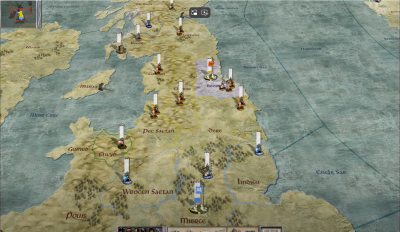 The game sold well in both the United Kingdom and America. In the UK, for the first two weeks after its release the game was the top selling video game. By 2008 the game had sold at least 100,000 units in the UK. The United States, Medieval had sold over 100,000 copies by August 2006.
The game sold well in both the United Kingdom and America. In the UK, for the first two weeks after its release the game was the top selling video game. By 2008 the game had sold at least 100,000 units in the UK. The United States, Medieval had sold over 100,000 copies by August 2006.
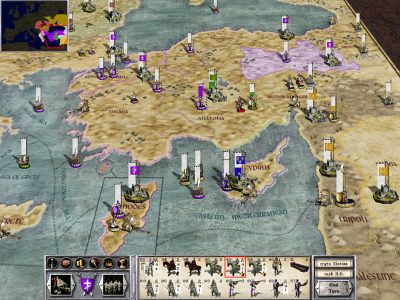 In May 2003, CA released an expansion pack for Medieval called Medieval: Total War – Viking Invasion (Viking Invasion). The expansion pack introduced a new campaign map that focused on the British Isles and Scandinavia, set between 793 and 1066. This period, known for the Viking invasions, allowed players to take on the role of the Viking invaders or defend against them as one of the early Anglo-Saxon factions. It also added eight new factions, including the Vikings, Saxons, Scots, Irish, Welsh, and Picts. New units such as the Viking Berserkers and Saxon Huscarles were introduced.
In May 2003, CA released an expansion pack for Medieval called Medieval: Total War – Viking Invasion (Viking Invasion). The expansion pack introduced a new campaign map that focused on the British Isles and Scandinavia, set between 793 and 1066. This period, known for the Viking invasions, allowed players to take on the role of the Viking invaders or defend against them as one of the early Anglo-Saxon factions. It also added eight new factions, including the Vikings, Saxons, Scots, Irish, Welsh, and Picts. New units such as the Viking Berserkers and Saxon Huscarles were introduced.
The expansion also brought new game mechanics, which included flaming ammunition for setting building on fire and a pre-battle deployment screen which let players deploy and organize their forces on the battlefield. Further, the expansion included enhancements to the original campaign, such as new playable factions and units, and a patch that fixed the bugs from the original game.
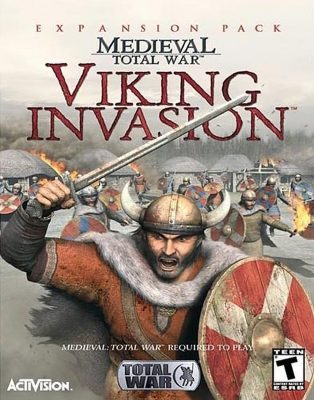 Viking Invasion was as well received as the base game. On Metacritic, the expansion holds a score of 84 out of 100. Critics praised the expansion for its new content, historical accuracy, and the added depth it brought to the original game. GameSpot highlighted the new Viking campaign as a great addition, noting that it added a lot of new content without changing the original gameplay. IGN also commended the expansion for its entertaining campaign experience and the new content that refined the original game. Computer Gaming World and Computer Games Magazine both nominated Viking Invasion for their 2003 “Expansion Pack of the Year” awards, but it lost out to other games.
Viking Invasion was as well received as the base game. On Metacritic, the expansion holds a score of 84 out of 100. Critics praised the expansion for its new content, historical accuracy, and the added depth it brought to the original game. GameSpot highlighted the new Viking campaign as a great addition, noting that it added a lot of new content without changing the original gameplay. IGN also commended the expansion for its entertaining campaign experience and the new content that refined the original game. Computer Gaming World and Computer Games Magazine both nominated Viking Invasion for their 2003 “Expansion Pack of the Year” awards, but it lost out to other games.
Medieval: Total War bridged the gap between the innovative Shogun and the widely acclaimed Rome: Total War. It also established the scope and structure that would be carried forward in future titles in the series.
Sources
Computer Games Magazine (March 2004) “Best of 2003; The 13th Annual Awards”
Computer Gaming World (March 2004). “Computer Gaming World’s 2003 Games of the Year”.
Creative Assembly. “The Making of Medieval: Total War.”
Entertainment and Leisure Software Publishers Association. (21 Feb 2009) “ELSPA Sales Awards: Silver”..
GameSpot. (19 Aug 2002) “Medieval: Total War Review.”
______ (8 May 2003) “Medieval: Viking Invasion Review”
GameZone. (13 Sept 2002) “Medieval: Total War Tops Sales Charts in UK and US”
IGN (6 Sept 2002) “Medieval: Total War Review.”
Metacritic.com Medieval: Total War
______ Medieval: Total War – Viking Invasion
PC Gamer. (Dec 2002) “Medieval: Total War Review.”
______ (3 June 2003) “Medieval: Total War – Viking Invasion”
Strategyfrontgaming.com (3 Nov 2020) Medieval Total War retrospective
Total War Wiki. “Medieval: Total War.”
